
Conversion of Escherichia coli to generate all biomass carbon from CO2 (Cell)
Plant Science Research WeeklyPlants are photosynthetic autotrophs, meaning they use light energy to feed themselves, with carbon dioxide as a carbon source. Heterotrophs like E. coli require organic carbon. Here, Gleizer et al. have rewired the metabolism of E. coli to make it into a (non-photosynthetic) autotroph, meaning it can…
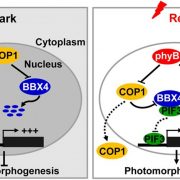
A new B-BOX containing protein regulates red light photomorphogenesis ($) (PNAS)
Plant Science Research WeeklyAs the primary red light photoreceptor in Arabidopsis, phyB affects various developmental processes, such as seed germination, shade avoidance, etc. PIF3 is a key repressor of phyB-mediated photomorphogenesis that is degraded in red light. Recently Heng et al. identified a positive regulator of red light…
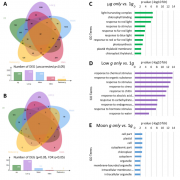
Arabidopsis transcriptional response to fractional gravity during spaceflight under blue-light (Frontiers Plant Sci)
Plant Science Research WeeklyA plant’s response to a microgravity environment allows for dissection of molecular pathways governing gravity sensing and other integrated pathways, such as phototropism. Renewed interest in long-term space travel also requires that plant behavior and growth under microgravity is well-understood and…
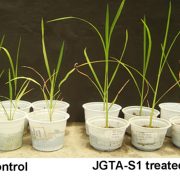
Rice nitrogen nutrition is improved by association with a fungus carrying nitrogen-fixing endobacteria ($) (Plant Cell)
Plant Science Research WeeklyPreviously, growth-promoting endophytic (living within the plant) microbes were isolated from plants (narrowleaf cattail, Typha angustifolia) growing in a nutrient-poor site in an effort to identify new beneficial microbes. One of these identified is the fungus Rhodotorula mucilaginosa. Now, Paul et…
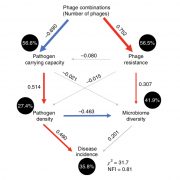
Phage combination therapies for bacterial wilt disease in tomato ($) (Nature Biotech)
Plant Science Research WeeklyBacteriophages are viruses that infect bacteria. As agents that weaken or destroy pathogens, they have shown therapeutic promise in human and plant disease treatment. Wang et al. studied the effect on pathogenic Ralstonia solanacearum of different phages individually and in combinations in the rhizosphere…

Antimicrobial solid media for screening non-sterile Arabidopsis thaliana seeds (bioRxiv)
Plant Science Research WeeklyTransgenic plant production often involves an agar-based selection step in which plants that have taken up the introduced DNA (containing a selectable marker) show resistance to a corresponding antibiotic. Typically, putatively transformed seeds are surface sterilized prior to plating so that microbes…
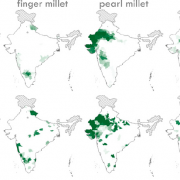
Assessing the sustainability of post-Green Revolution cereals in India ($) (PNAS)
Plant Science Research WeeklyThe major objectives of sustainable agriculture are to fulfill food requirements, maintain a safe environment and profitable economy, and withstand climate change. Here, Davis et al. discuss a multidimensional approach to achieve sustainable agriculture in India by transitioning some areas from growing…

Plant Science Research Weekly: December 6
Blog, WWR Full PostReview. Dare to change, the dynamics behind plasmodesmata-mediated cell-to-cell communication
A new review by Petit et al. skillfully highlights the role of plasmodesmata at the interface between cell biology and whole-plant physiology. These tiny channels that connect plant cells determine what…
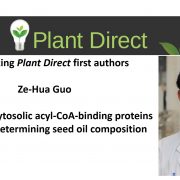
Recognizing Plant Direct authors: Ze-Hua Guo
Plant Direct, Plant Direct: Author ProfilesZe-Hua Guo, first author of Arabidopsis cytosolic acyl-CoA-binding proteins function in determining seed oil composition
Current Position: Postdoctoral Fellow, University of Hong Kong, Pokfulam, Hong Kong, China
Education: PhD in Plant Molecular Biology at the University of Hong Kong (Hong Kong,…

